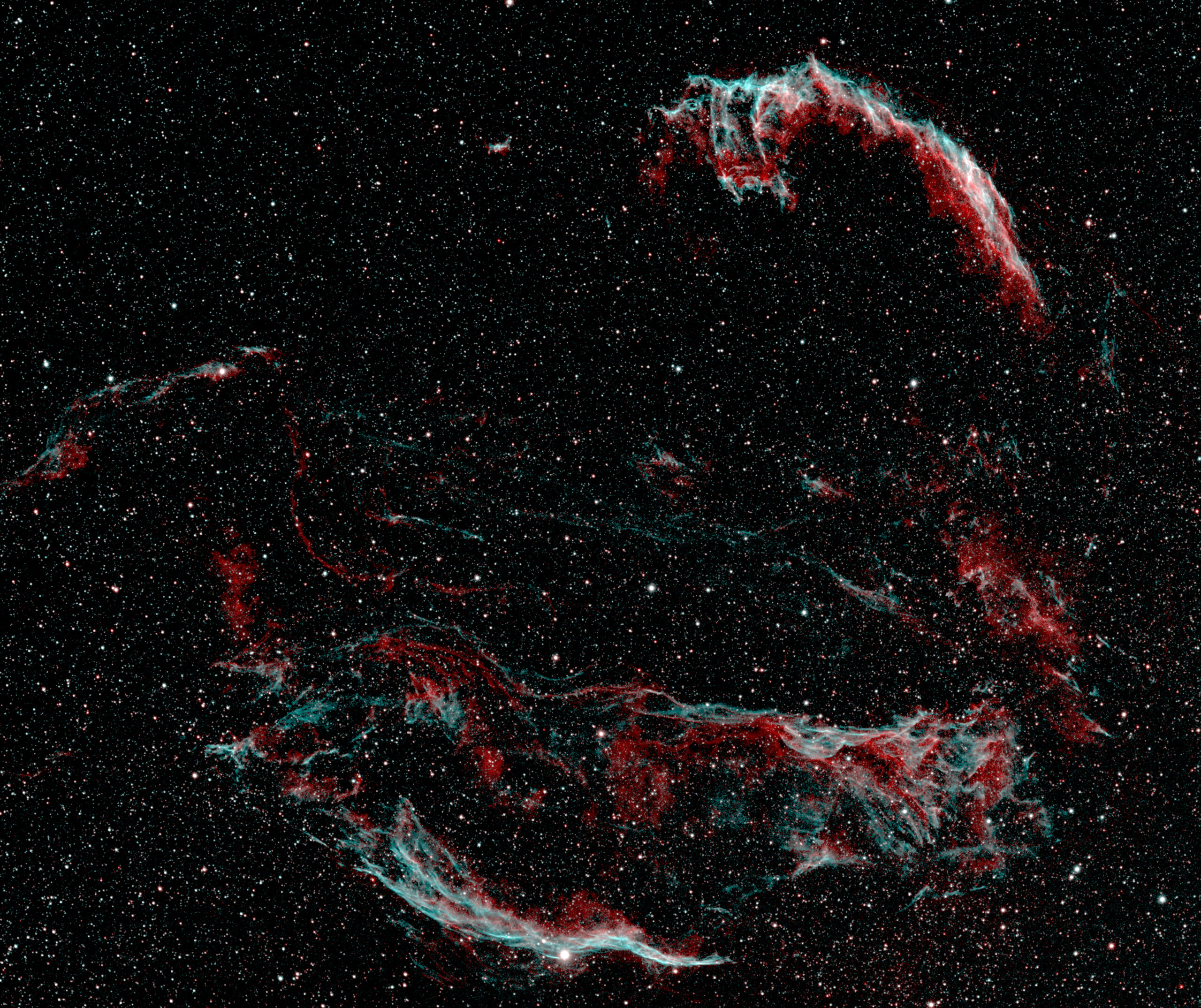
William Herschel discovered the Veil Nebula while surveying the night sky with his telescope in 1784. He described it as a “bright nebula” and catalogued it as object H V-38 in his catalogue of nebulae and star clusters. The nebula was later studied in more detail by other astronomers, including E.E. Barnard, who captured photographs of the nebula using long exposures. The Veil Nebula is a supernova remnant and its age is estimated to be around 5,000 to 8,000 years old. It was created when a massive star exploded and its outer layers were expelled into space. The explosion was so powerful that it created a shockwave that is still expanding today, and it is still visible to us as the Veil Nebula.
- It is one of the closest supernova remnants to Earth, at a distance of around 1,470 light-years.
- It is very large, spanning around 110 by 50 light-years.
- It is composed of several different structures, including filaments, wisps, and loops.
- It is visible to the naked eye as a faint “cloud” in the night sky.
- It has been studied extensively in various wavelengths of light, including X-rays, ultraviolet, infrared, and radio.
- It is a source of heavy elements such as oxygen, neon, and sulfur, which were created in the explosion and have been expelled into space.
- It is also a source of cosmic rays, high-energy particles that are constantly bombarding the Earth.
- Veil Nebula – Wikipedia

